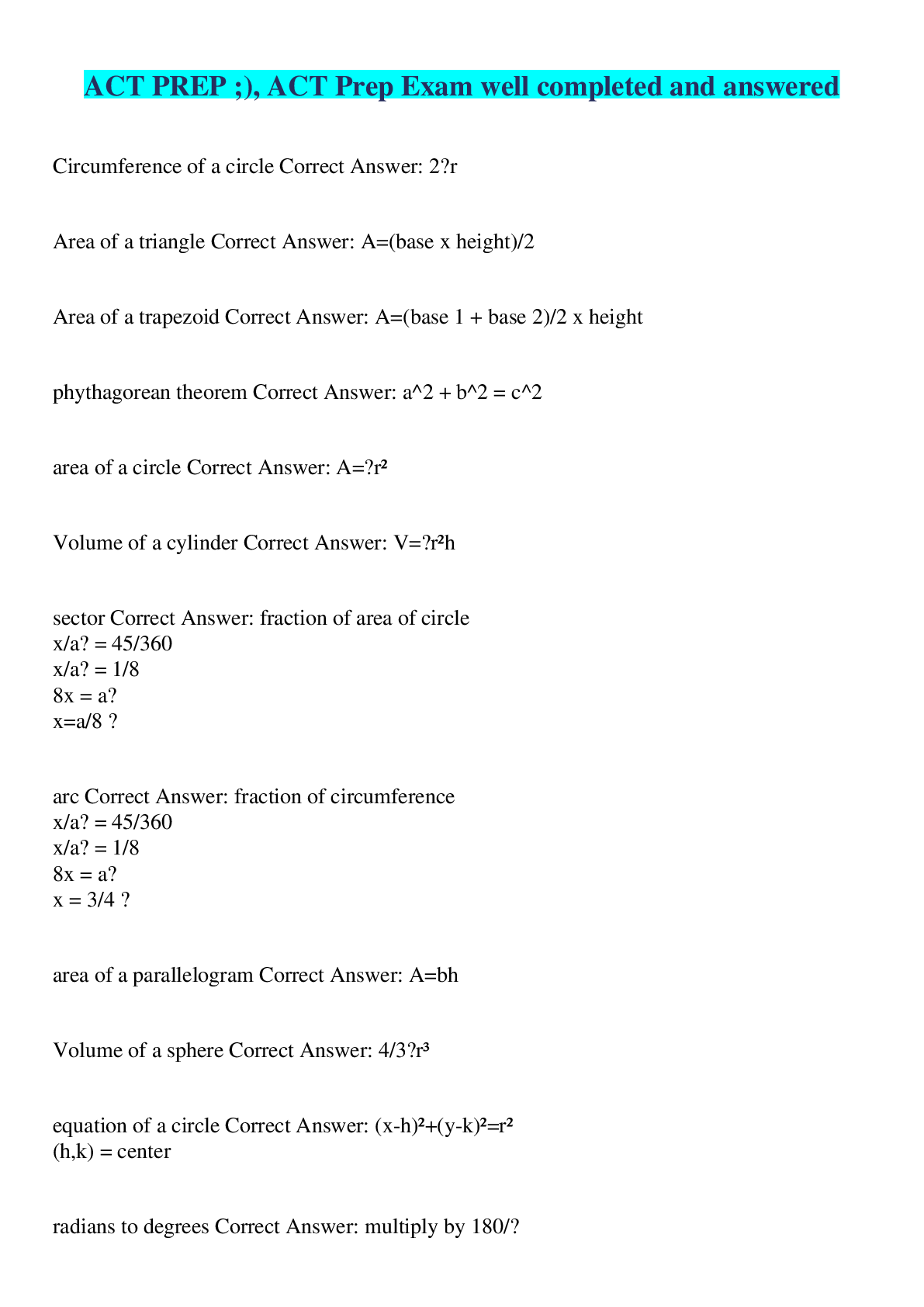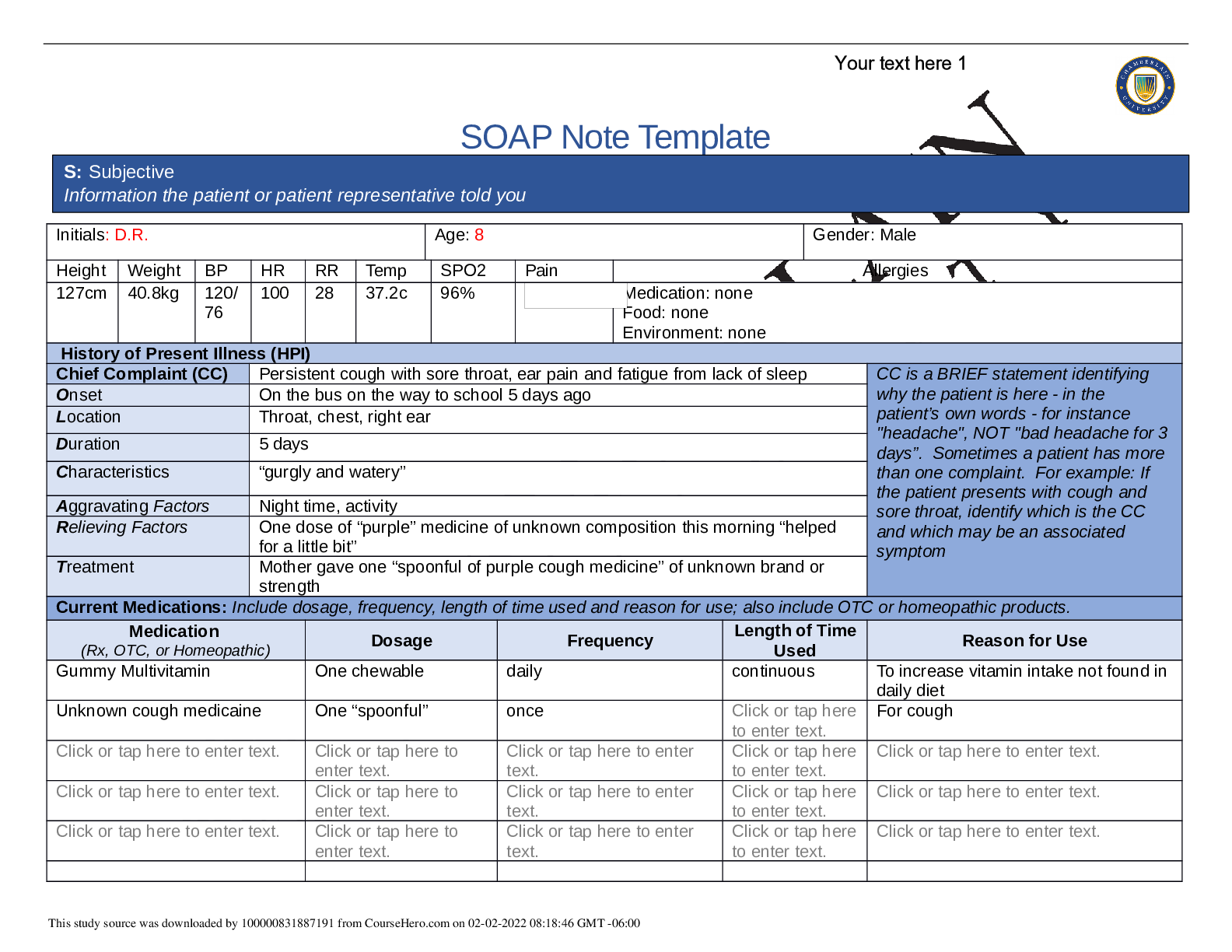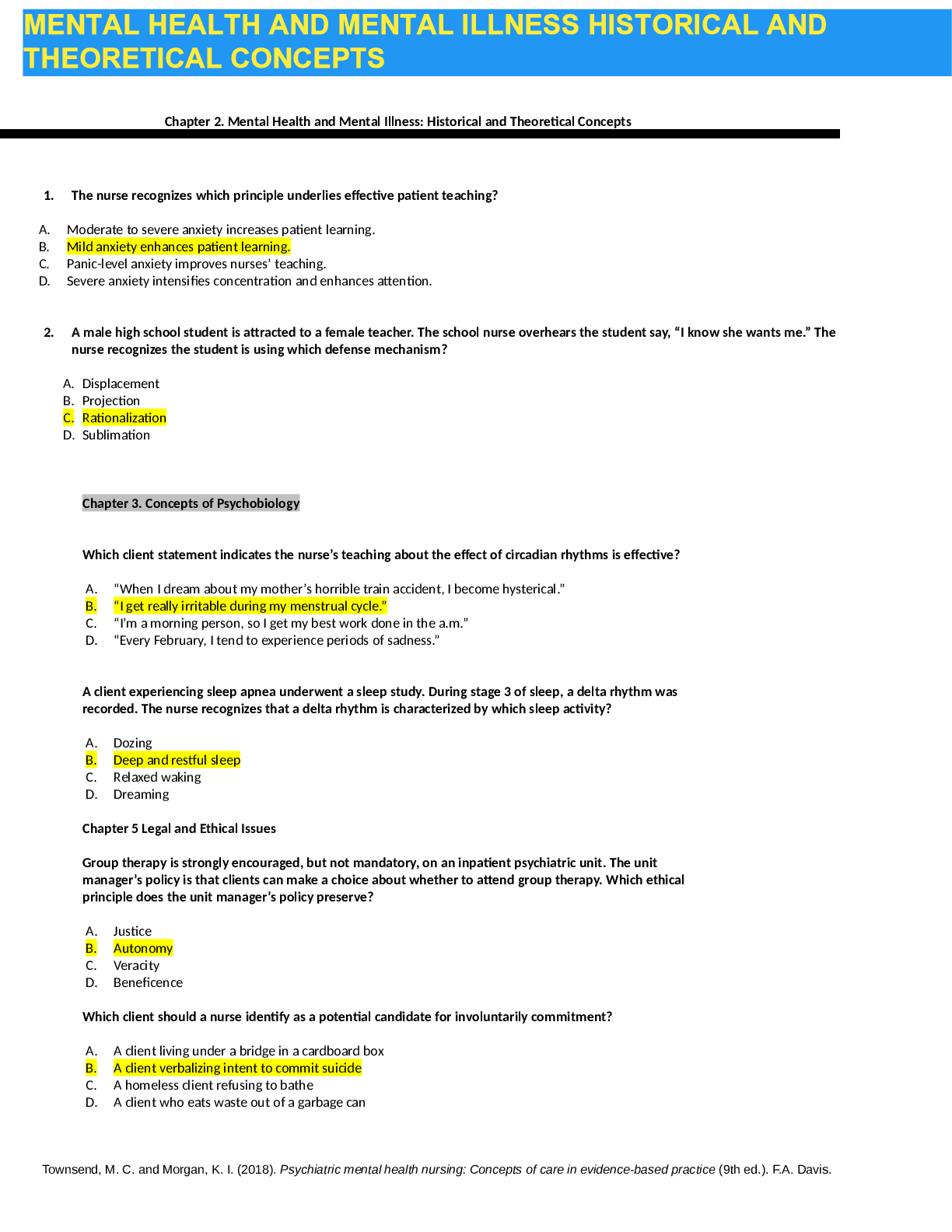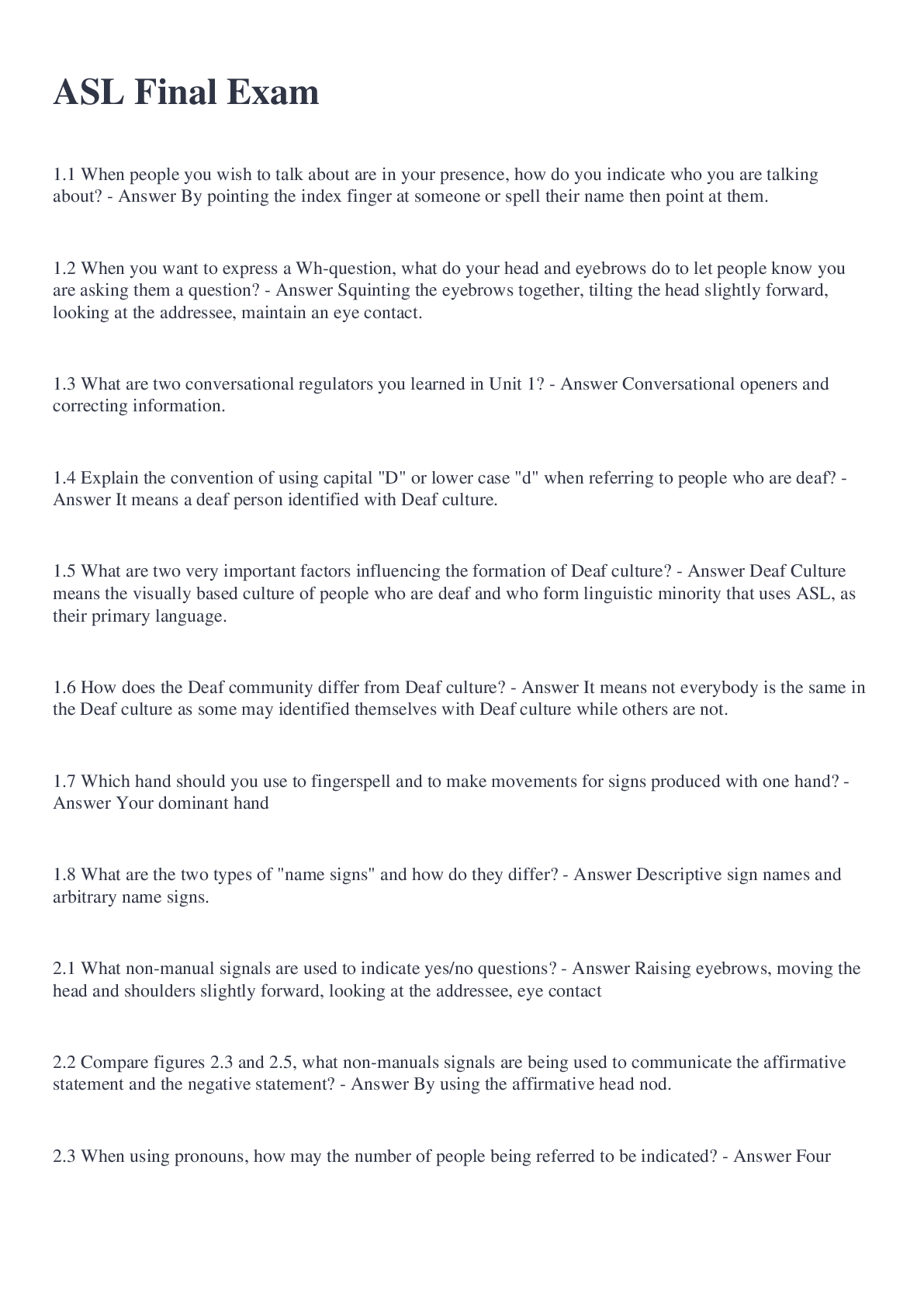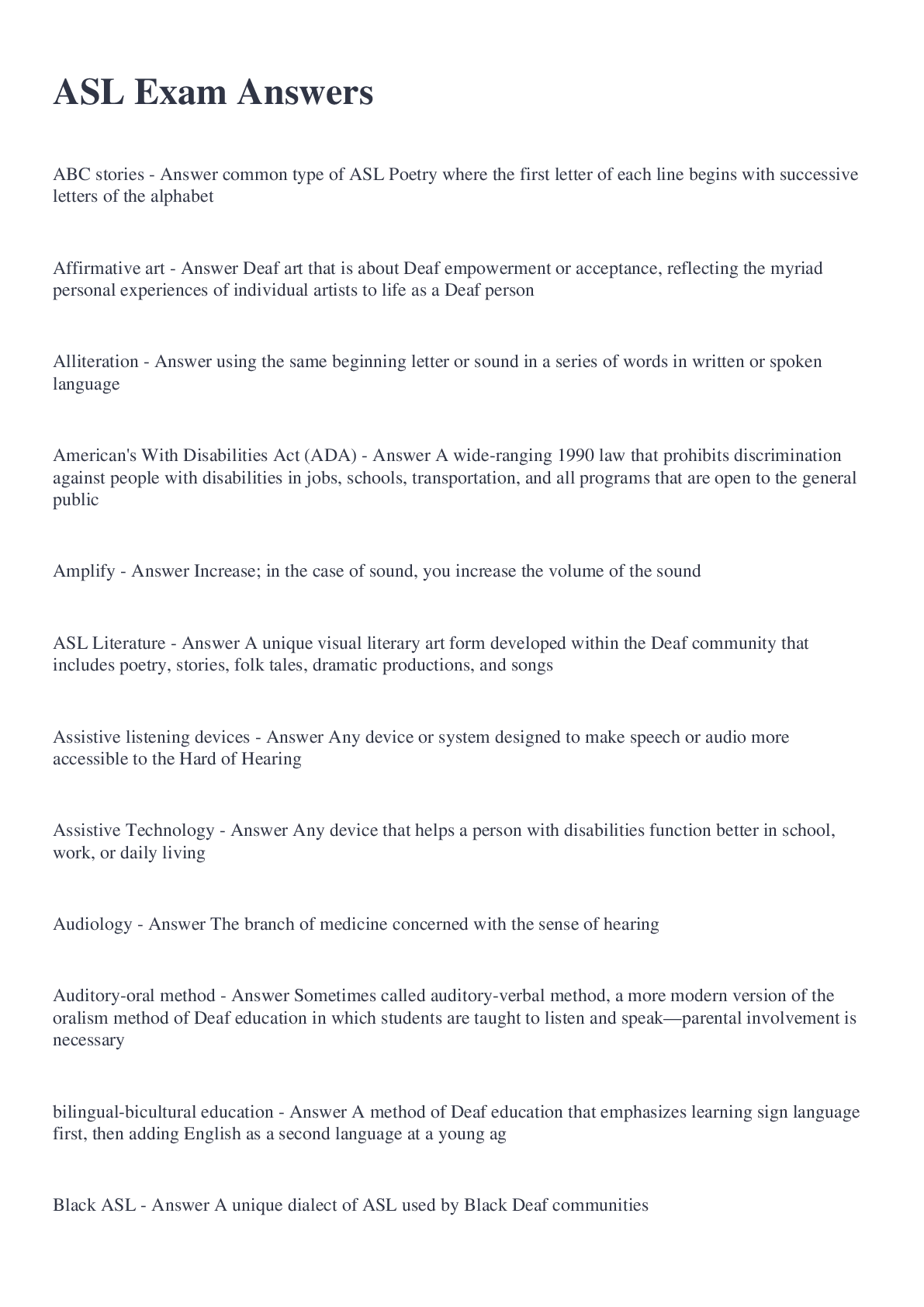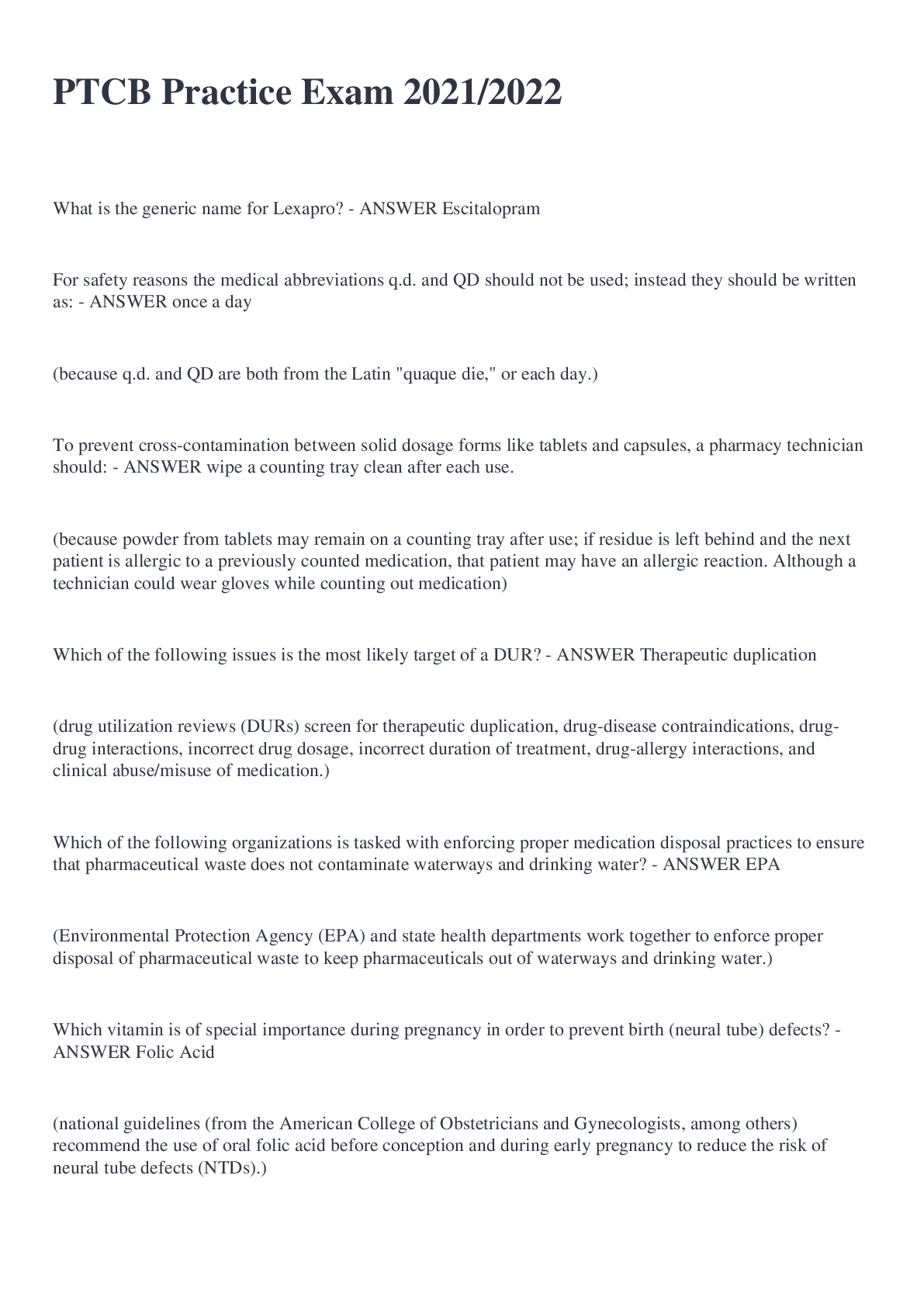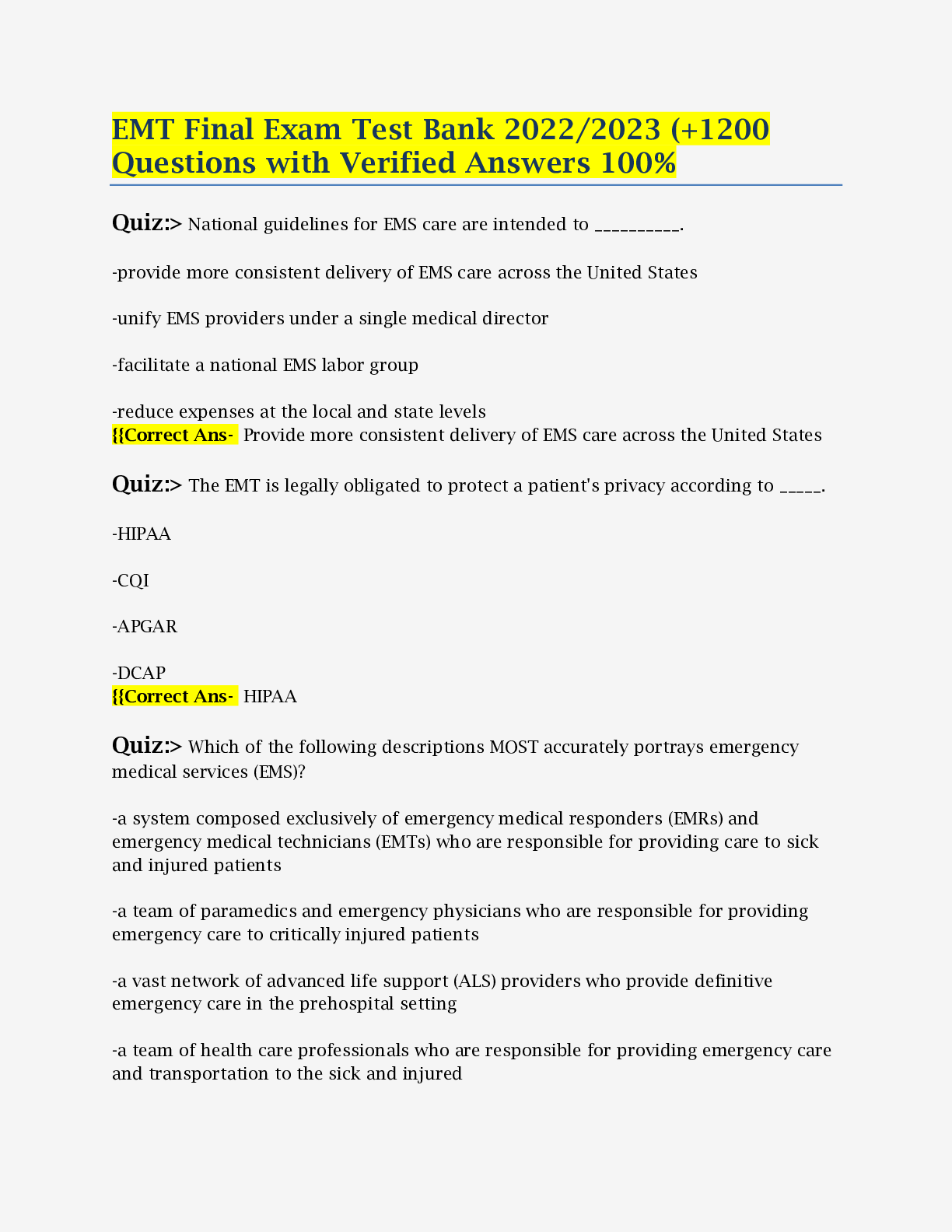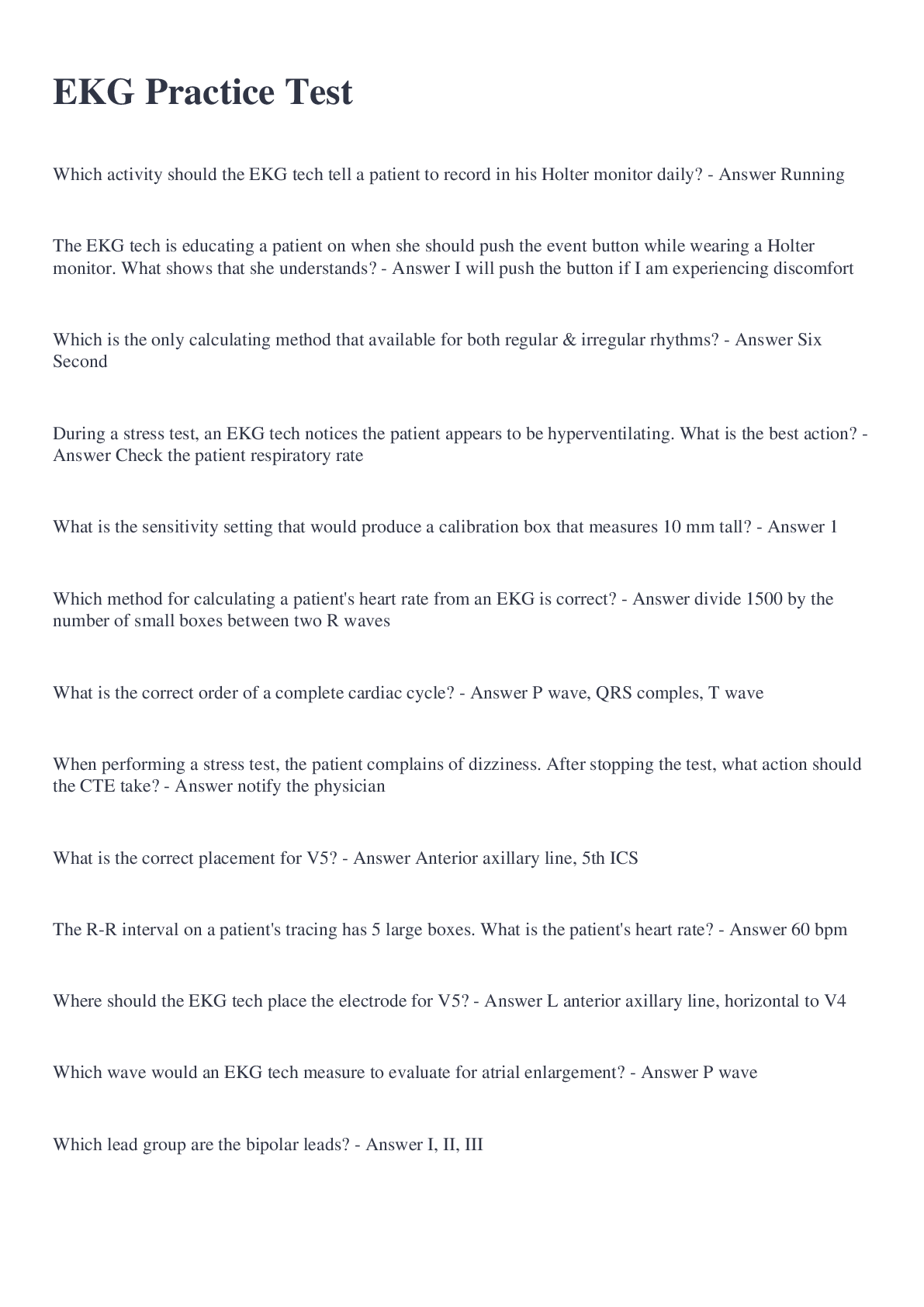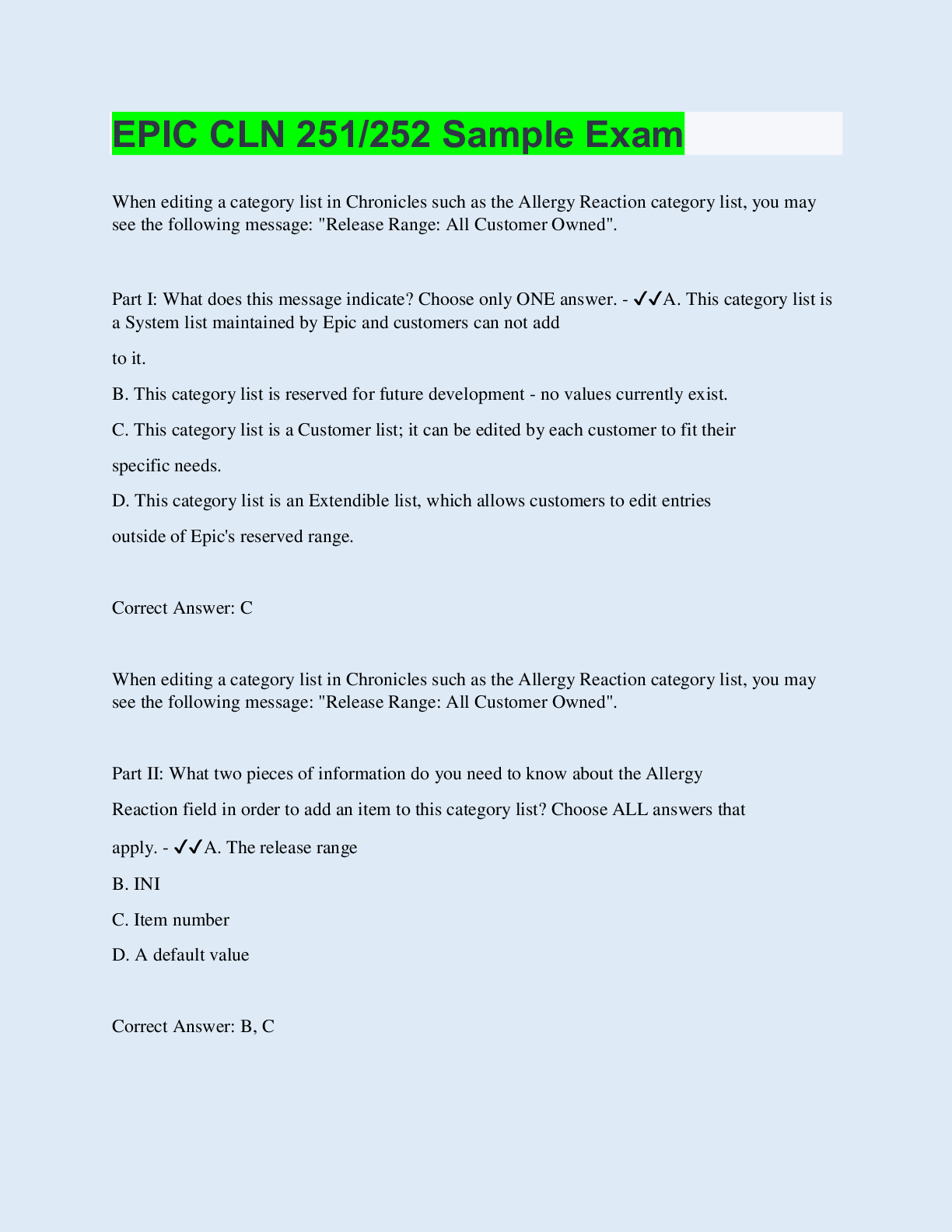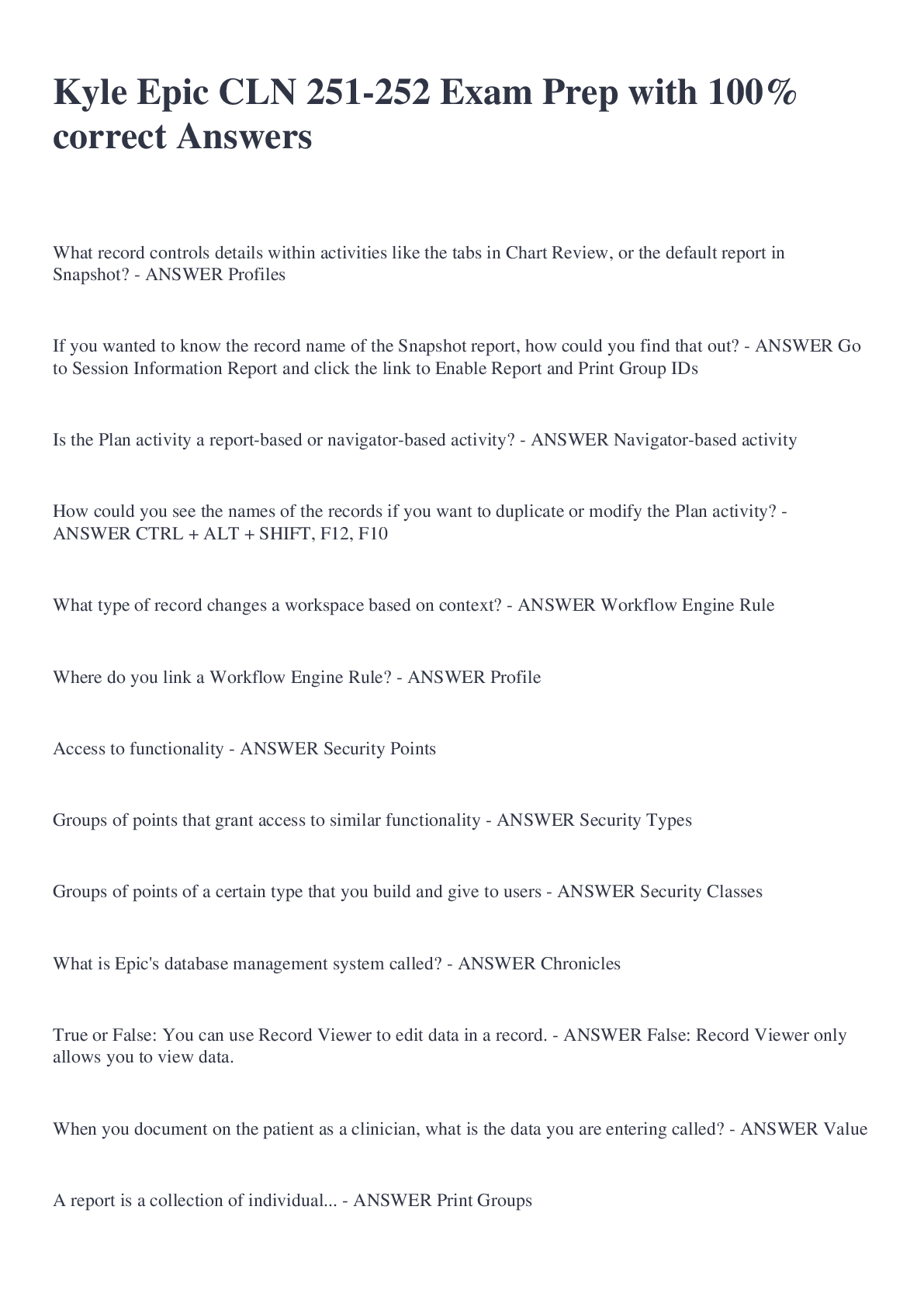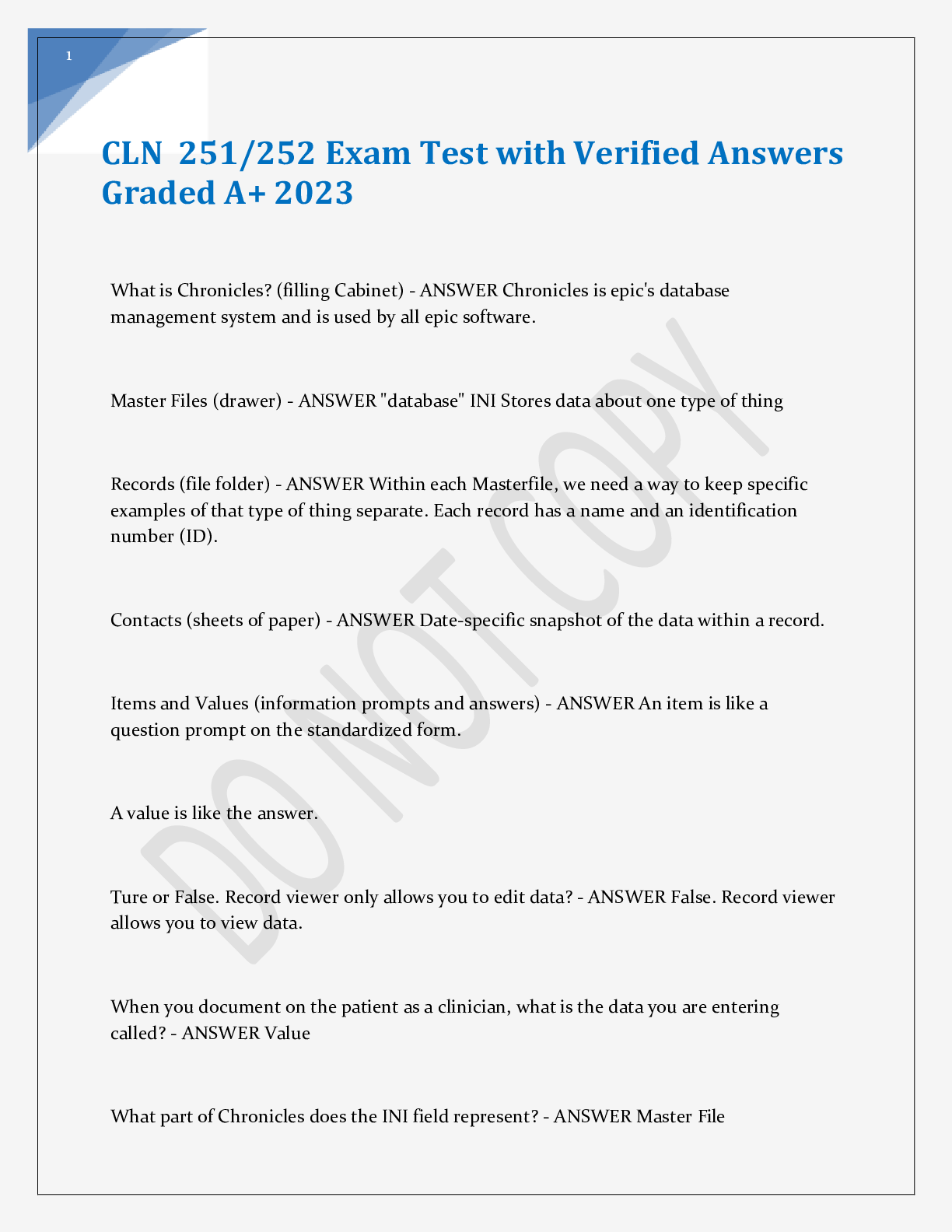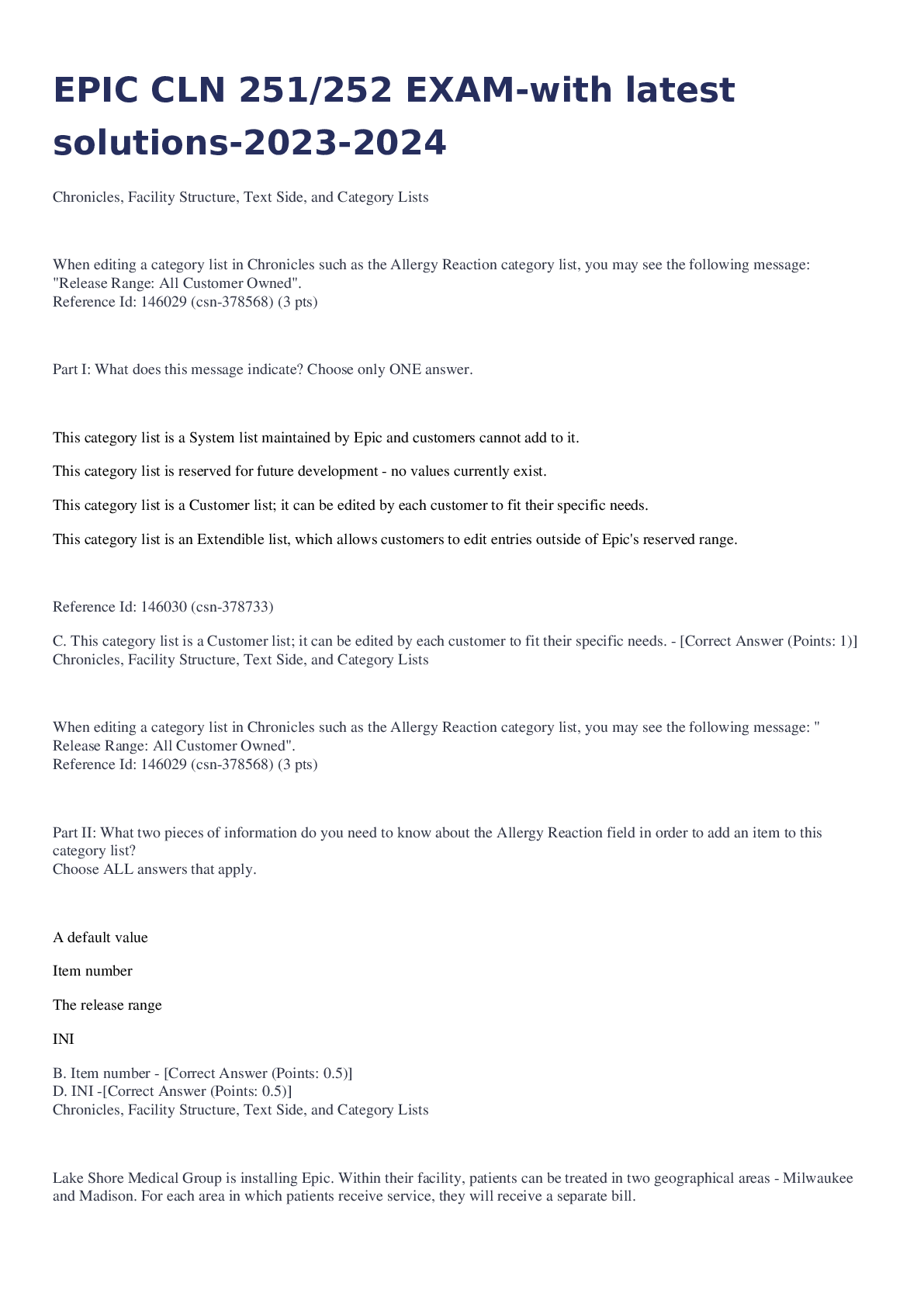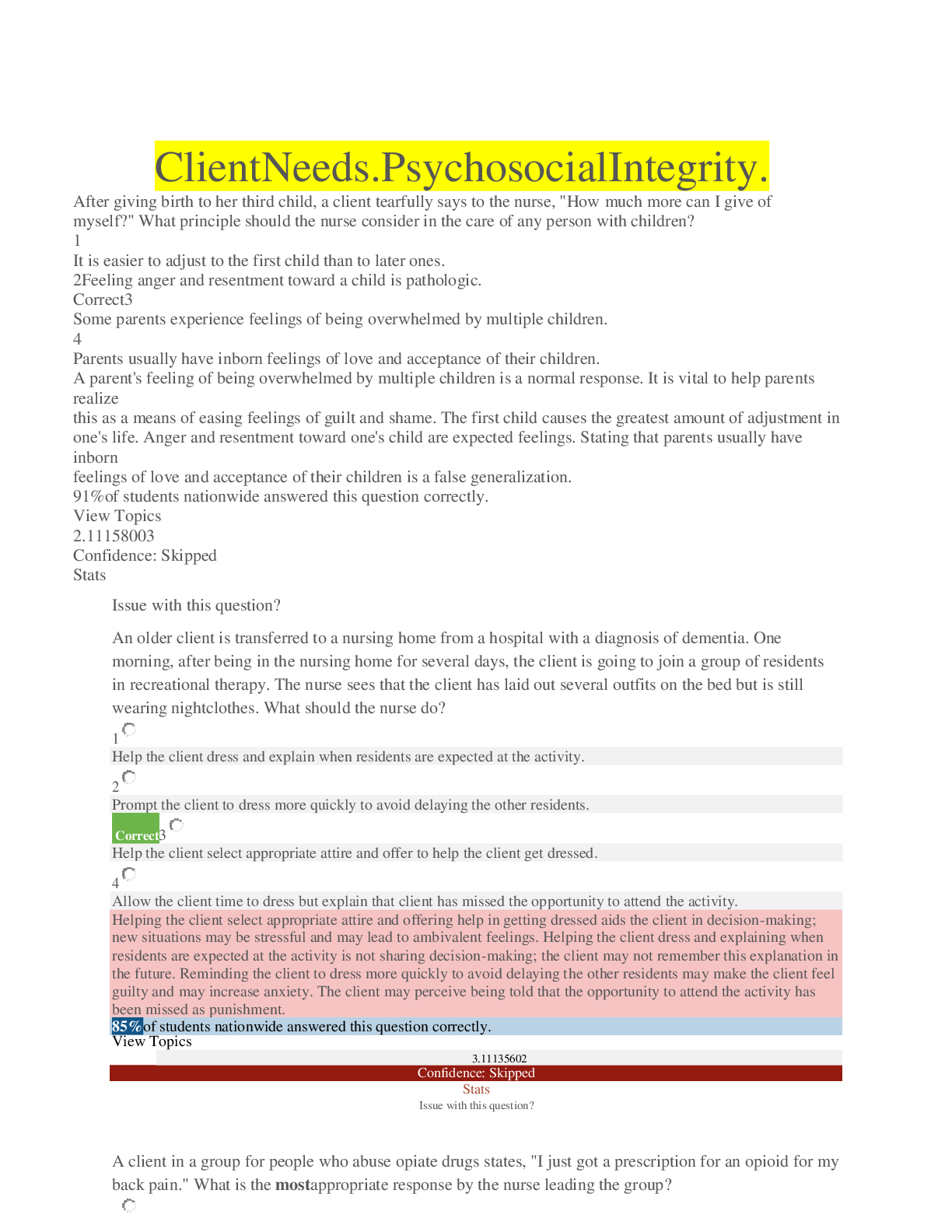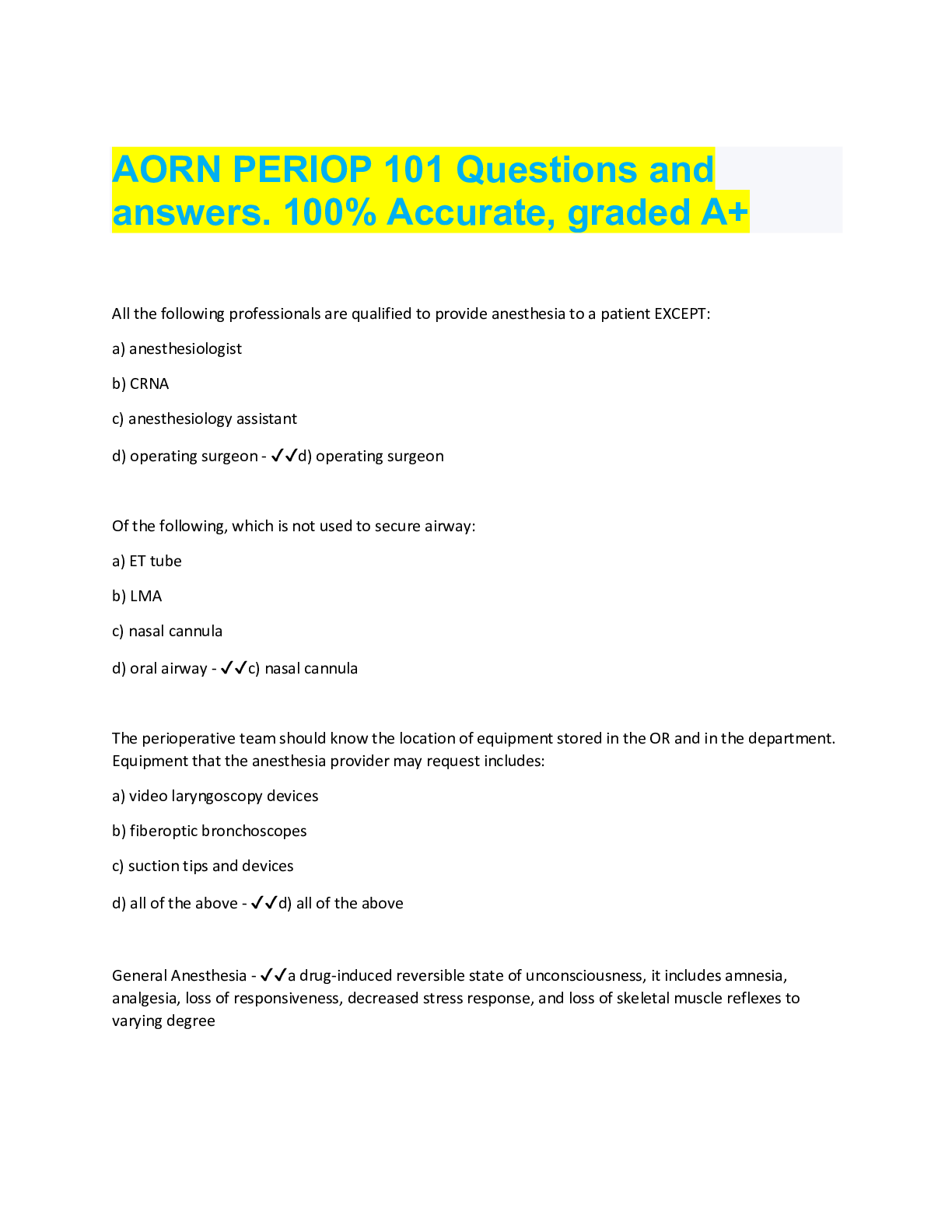Environmental Science > EXAM > Sophia_Environmental_Science_Milestone_2,100% CORRECT (All)
Sophia_Environmental_Science_Milestone_2,100% CORRECT
Document Content and Description Below
Which of the following is a strategy associated with conservation biology? • Designating a nature reserve to protect an endangered wildcat species. • Re-establishing a native species of pine tree ... in an area used previously by loggers. • Exploring the interdependence of species within ecosystems on a global scale. • Monitoring and evaluating groundwater quality in a formerly contaminated site. CONCEPT Conservation Biology & Restoration Ecology 2 Which of the following is a non-renewable resource? • Wind • Wood • Biomass • Petroleum CONCEPT Natural Resources 3 Which statement is NOT true about energy and trophic levels within a food web? • Most of the energy between trophic levels is lost in the form of metabolic heat. • Secondary production introduces only 1% of new energy to the food chain. • The rate at which energy accumulates in plants depends on temperature, sun and water. • About 90% of the energy available at one trophic level does not transfer to the next. CONCEPT Food Chains and Food Webs 4 Which of the following is NOT an example of overexploitation? • Little more than one thousand bison existed in North America by the 1880s. • Fur processing in Canada is carefully regulated to protect both the animals and the environment. • 90 species of Asian turtles are collected in Singapore and Cambodia for Chinese restaurants. • Slow-growing medicinal plants are harvested before they have a chance to reproduce. CONCEPT Overexploitation 5 Population ecologists study which of the following characteristics? • Temperature regulation, nutrition and metabolism of organisms. • Number, density, age, and sex of organisms. • Atmosphere, rocks, water and living organisms. • Composition, distribution and interaction of species in a given area. CONCEPT Ecology 6 Choose the true statement about the nitrogen cycle. • Bacteria take nitrogen from the atmosphere and convert it into sugars. • Nitrogen makes up about 22% of the atmosphere's composition. • Animals release nitrogen through urination and by dying. • Nitrogen is contained in the leaves of plants such as peanuts, soybeans and clover. CONCEPT Water and Nitrogen Cycles 7 Choose the statement about the impact of an invasive species that is NOT true. • Invasive species can take over forests or croplands. • Humans can be exposed to unknown pathogens. • Native species can be displaced or killed. • The health of an ecosystem often improves. CONCEPT Native and Non-Native Species 8 Which list correctly orders the examples of organism, population, community and ecosystem? • Tundra, moss, reindeer that eat moss, rocks and ice • Deer, herd of deer, deer and trees in forest, rocks and ponds around the forest • Tadpole, pond, frog, fish and insects in the pond • Elephant herd, grasslands, lions in the grasslands, river and trees CONCEPT Ecology 9 Moss and lichen begin to grow on land revealed by glacial retreat. Over a period of years, these plants are replaced by shrubs and then by taller shrubs. The ecological process that is occurring is called __________. • species interaction • primary succession • ecosystem management • secondary succession CONCEPT Community Ecology 10 “Rain, snow, wind and temperature all pertain to what we call ‘weather,’” the teacher said. “Climate is the weather in a location over many years. Now, who can tell me what determines the climate in a certain area?” Several students offered answers. Choose the correct answer. • Shane: “The composition of gases in the atmosphere.” • Andrea: “The air and land temperatures.” • Judith: “The amount of precipitation that falls.” • Carl: “The area’s physical features.” CONCEPT Earth's Features 11 Which statement accurately describes the "temperate forest" biome? • High biodiversity and biomass exist here. • Animals that live here tend to be smaller and nocturnal. • Many animals that hibernate live here. • Most of the human population lives here. CONCEPT Biomes 12 Select the example that describes a non-native species. • Populations of deer and wolves in Arizona have evolved in relationship with each other. • This particular species of orchid has remained within the same environment for hundreds of years. • Domestic livestock multiplied rapidly throughout eastern North America after their introduction by English colonists. • A species of parrot has evolved to occupy a key niche within the Amazon rainforest ecosystem. CONCEPT Native and Non-Native Species 13 According to the graph, how many months did it take for the deer population to reach carrying capacity? • 4 • 10 • 8 • 6 CONCEPT Population Ecology 14 Choose the example of a decomposer in the food chain. • A head of lettuce grows in a garden • An earthworm consumes a wilted lettuce leaf in a trash pile • A wildcat consumes the rabbit • A rabbit eats lettuce growing in a garden CONCEPT Ecosystems Ecology 15 Choose the statement about carbon cycling that is NOT true. • Animals release carbon through respiration. • Plants release carbon dioxide into the air. • Plants need carbon dioxide in order to make food. • Animals eat plants and receive carbon as sugars. CONCEPT Photosynthesis and the Carbon Cycle 16 Which of the following is NOT an impact of deforestation? • Deforested lands are often so degraded that they can sustain very little life. • Loss of forests affects rainfall, humidity and temperature in nearby areas. • Deforestation of tropical rainforests has led to discoveries of new species. • Trees that are burned release carbon dioxide, which contributes to global warming. CONCEPT Forests and Deforestation 17 Select the statement that refers to an exponential population growth model. • This model considers carrying capacity when examining population growth. • The slope of the graph in this model is steepest near the top. • This model considers a limited amount of natural resources when examining population growth. • This graph is a more realistic model of population growth. CONCEPT Population Ecology 18 Which of the following is an example of symbiosis? • Bats snatch mosquitoes out of the air. • A blue jay uses a nest built by another jay. • A honeybee takes pollen from a flower. • Rabbits and deer both consume grass. CONCEPT Community Ecology 19 Select the statement that is indicative of valuing a species for its intrinsic value. • Service dogs visit an elder-care facility each week to sit with and comfort the residents. • Corn is an essential crop because it helps feed a significant portion of the world’s population. • A demand for ivory to make carvings, jewelry and piano keys threatens an elephant population. • It’s wrong that a factory-farmed chicken spends its entire life in an 8 1/2 x 11-inch space. CONCEPT The Role of Individual Species 20 Select the food chain that is in the correct order, starting at the first trophic level. • Earthworm, Acorn, Squirrel, Hawk • Acorn, Squirrel, Hawk, Earthworm • Earthworm, Hawk, Squirrel, Acorn • Acorn, Earthworm, Squirrel, Hawk CONCEPT Food Chains and Food Webs 21 Environmental scientists cite several challenges to protecting endangered species. Which of the following is NOT a difficulty faced by those working to protect an endangered species? • It is difficult to enforce protection policies in some environments. • Identifying danger for a species may come too late to reverse the danger. • People aren’t that interested in protecting animals they do not consider valuable. • There is no legislation in the United States to protect species identified as endangered. CONCEPT Endangered Species 22 Choose the statement that is NOT true about conditions within the given biome. • Many hibernating animals live in the taiga. • Deserts have little to no topsoil and the soil lacks nutrients. • Freshwater biomes include lakes, rivers and streams. • Biodiversity is very high in the tundra. CONCEPT Biomes [Show More]
Last updated: 1 year ago
Preview 1 out of 10 pages

Reviews( 0 )
Document information
Connected school, study & course
About the document
Uploaded On
Oct 05, 2021
Number of pages
10
Written in
Additional information
This document has been written for:
Uploaded
Oct 05, 2021
Downloads
1
Views
354


